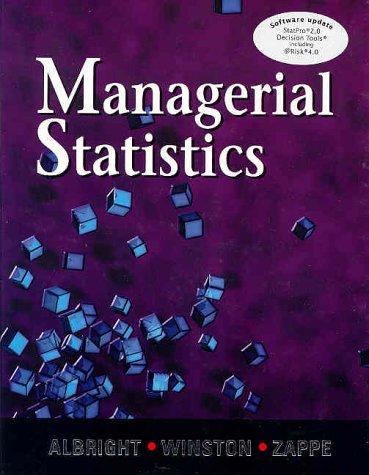Consider a random sample of 100 households from a middle-class neighborhood that was the recent focus of
Question:
Consider a random sample of 100 households from a middle-class neighborhood that was the recent focus of an economic development study conducted by the local government. Specifically, for each of the 100 households in the sample, information was gathered on the gross annual income earned by the first wage earner of the household and on each of several other variables. The data are given in the file P9_26.XLS. Economic researchers would like to test for the existence of a significant difference between the mean annual income levels of the first household wage earners in the first (i.e., SW) and second (i.e., NW) sectors of this community. In fact, they intend to perform similar hypothesis tests for the differences between the mean annual income levels of the first household wage earners from all other pairs of locations (i.e., first and third, first and fourth, second and third, second and fourth, and third and fourth).
a. Before conducting any hypothesis tests on the difference between various pairs of mean income levels, perform a test for equal population variances in each pair of locations. For each pair, report a p-value and interpret its meaning.
b. Based on your conclusions in part a, which test statistic should be used in performing a test for the existence of a difference between population means?
c. Given your conclusions in part b, perform a test for the existence of a difference in mean annual income levels in each pair of locations. For each pair, report a p-value and interpret its meaning.
Step by Step Answer:

Managerial Statistics
ISBN: 9780534389314
1st Edition
Authors: S. Christian Albright, Wayne L. Winston, Christopher Zappe





